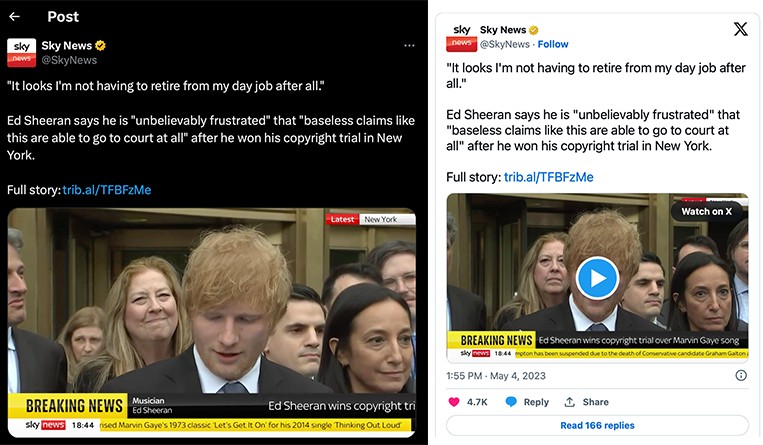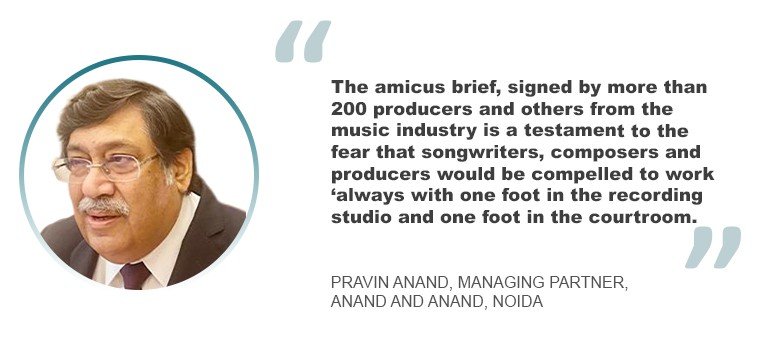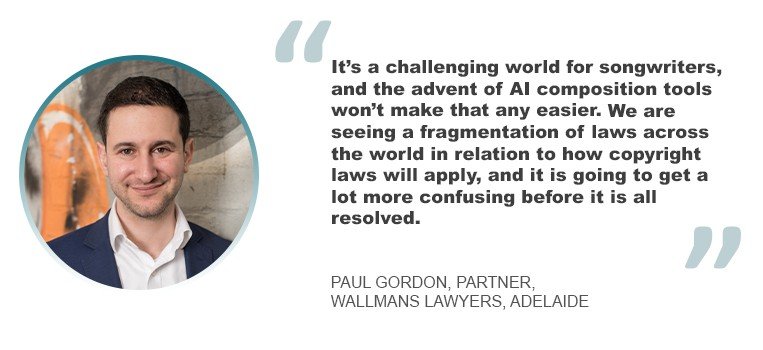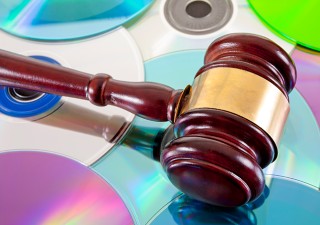Did the Ed Sheeran copyright case blur the lines for music creativity?
29 February 2024

While Ed Sheeran’s recent copyright case was lauded as a victory for creativity, there are still ongoing challenges for songwriters and performers. Excel V. Dyquiangco discusses the effects of this victory on copyright infringement and the caution musicians must exercise.
When a jury found that the group responsible for Robin Thicke’s “Blurred Lines” violated a Marvin Gaye copyright in 2015, a new era of caution for composers and songwriters began. However, a 2023 verdict in a New York courtroom found that found that Ed Sheeran did not violate a separate Gaye copyright sends a different message.
Sheeran was found not liable in the infringement trial that accused his song “Thinking Out Loud” of infringing on Gaye’s “Let’s Get It On.”
Sheeran, who threatened during his testimony to retire if copyright claims like the one against him continue, said in a post-trial statement that he is “unbelievably frustrated that baseless claims like this are allowed to go to court at all. It’s simply wrong. By stopping this practice we can also properly support genuine music copyright claims so that legitimate claims are rightly heard and resolved,” calling the against him a “bogus claim.”
“These chords are common building blocks which were used to create music long before ‘Let’s Get It On’ was written, and will be used to make music long after we’re gone,” Sheeran said in his statement. “They are in a songwriter’s alphabet, our toolkit, and should be there for all of us to use. No one owns them or the way they are played, in the same way nobody owns the colour blue.”
Singer John Legend even claimed that the earlier ruling would set a harmful precedent for musicians who create music inspired by others. It undoubtedly established a precedent for legal action since other seasoned composers made the decision to sue hitmakers they believed were overly influenced by their work. Several musicians started giving composition credit to earlier songs, some because the melodies were similar and others to prevent a repetition of the “Blurred Lines” reaction. Some cases proceeded to trial, while others were handled outside the courts.
Given this scenario, does the Ed Sheeran case represent a change in how these cases are proceeding? Is a discernible shift in how courts are approaching music copyright infringement cases these days?
According to Alyshea Low, a partner at Skrine in Kuala Lumpur, it is still premature to say, based on this one decision, whether there is a shift in how courts approach music copyright infringement cases. Whether there is copyright infringement will be “highly dependent on the individual facts.”

“For every two disputed songs in every case, we are looking at differing chord progressions and harmonic rhythms and whether one party can claim copyright in something that may be considered common,” she explained. “In the Ed Sheeran case, the defendants were able to distil the commonalities between the two songs in question and, with that commonality, reduce it to something that cannot be afforded copyright protection.”
She added: “However, a potentially deciding factor was that in the Ed Sheeran case, Sheeran himself sang and played “Thinking Out Loud” on a guitar to the jury when he took the stand to passionately defend himself against accusations of plagiarism. In contrast with the “Blurred Lines” case, Thicke and Williams’ own counsel in an interview stated that ‘My artists were not as involved or as engaged as Ed Sheeran was.’ It is possible that Sheeran’s demonstration of the works in question, coupled with the facts of the case likely impacted (or at least influenced) the jury’s perception over the matter when they heard the artist as a witness defending himself.”
A cautionary tale of copyright infringement?
With the “Blurred Lines” case seen as a significant turning point for the music industry, leading to increased caution among songwriters and with the recent ruling in favour of Sheeran, is this caution of others in the industry be alleviated, or do other factors continue to contribute to the complexity of copyright issues in music?
“We think it’s a bit premature to say how the Ed Sheeran case will influence the impact made by the ‘Blurred Lines’ case,” said Low. “After all, the ‘Blurred Lines’ case has not been expressly overruled. As such, the odds are even, so to speak, between plaintiffs and defendants now that there are two paradoxical judgments on the degree of similarity that needs to be proven to establish infringement.”
Gooi Yang Shuh, a senior associate at the same law firm, said songwriters and composers – like John Legend, above – widely panned the “Blurred Lines” case for fear that it set a precedent, which blurred the lines between being inspired by a song and actually copying it. He added that this is particularly so given that most music – even art and culture, in general – is inspired by previous works and what has come before.
As artists can readily name multiple other artists who inspired and influenced their musical style and career, this has caused concern on its effect on creative expression in music, according to Shuh.
Meanwhile, many artists and songwriters have vocally lauded the Ed Sheeran case as a victory for creativity. Many regard it as a message that there cannot be copyright monopoly over commonplace elements of musical composition, particularly chord progressions. However, Shuh noted that this may deter copyright owners from suing for infringement due to mere similarities in chord progressions and allow songwriters to continue making music without constant fear that they cannot use a chord progression already used in other songs.
In addition, Shuh advised that the success in the Ed Sheeran case should be “viewed on its specific factual matrix.” Since copyright infringement is multi-faceted, each case must be assessed on a case-by-case basis. With this, he said that songwriters should not take the Ed Sheeran case win to mean that this brings an end to music copyright infringement lawsuits over similarities in chord progression or even “feel and sound.”
According to Pravin Anand, managing partner at Anand and Anand in Noida, the “Blurred Lines” case led to songwriters and music producers needing to be overzealous in terms of maintaining caution, lest they are found to be infringing another composer or songwriter’s work.

“The amicus brief, signed by more than 200 producers and other persons from the music industry subsequent to the jury decision in the “Blurred Lines” case is a testament to the fear that songwriters, composers and producers would be compelled to work ‘always with one foot in the recording studio and one foot in the courtroom,’” he said. “In my opinion, the change in the approach of the judiciary witnessed in the Zeppelin, Katy Perry and Ed Sheeran cases was quite welcomed. It reinstated the freedom that artists, while creating music, should have the legal principle that only specific expressions or arrangements of musical notes should be protected under copyright law and not the idea itself.”
He added: “Having said that, we feel that the level of caution exercised by songwriters, composers and producers would not per se be affected or alleviated on account of the Ed Sheeran decision. The reason behind this is that when the two cases are compared and contrasted, it becomes clear that decisions of courts and juries are significantly dependent on the particular facts and circumstances of each case. We therefore feel that songwriters would continue to err on the side of caution. The trend of artists giving credit to other singers or songwriters, such as Taylor Swift crediting Right Said Fred on her single ‘Look What You Made Me Do’ and Ed Sheeran adding the writers of TLC’s ‘No Scrubs’ to his song ‘Shape of You’ indicates that they would continue to be careful of potential copyright claims.”
When similar becomes too similar
According to Anand, this case has not established any new legal precedents or interpretations of copyright law per se.
“The case essentially revolved on the question ‘how similar is too similar?’ It has been noted that exclusivity cannot be claimed in musical patterns, such as the competing four-chord progressions in both the songs, which are fairly common in the industry,” he said. “The case has thus reinstated the principle that only original compositions are protected under the copyright law and commonplace elements, such as common chord progressions, do not fall within its fold.”
Anand added that the narrowing down of evidence that could be presented to a jury by the judge in the Ed Sheeran case is worthy of note.
“The judge removed reference to the bass element since the same did not appear in the sheet music deposit copy that formed the basis for copyright for ‘Let’s Get It On’ in 1973,” he said. “Further, the judge clarified in the pre-trial ruling that the plaintiff’s expert musicologist was not allowed to testify that the chord progression or harmonic rhythm in ‘Let’s Get It On’ were distinctive or unique. This was based on the reasoning that there existed uncontested proof that such elements are common musical techniques. This case would certainly be referenced in cases where claims are sought to be levelled based on basic genre elements to strengthen the case of the defence that the use of the common elements in music is fair and non-infringing.”
This was echoed by Paul Gordon, a partner at Wallmans Lawyers in Adelaide. He said that while the case demonstrated a return to the normal, the lack of any judicial reasoning means that the case is of limited value, and that the breadth of infringement established by the “Blurred Lines” case continues to be available.
“The other thing to remember is that music is a global industry,” he said. “I’ve been commenting on a U.S. case, but the position, for example, in Australia is significantly different and only tangentially concerned with the U.S. position. As laws continue to diverge from each other, we will likely see new battle lines being drawn in cases of this type.”
In both cases, much of the trials were dedicated to receiving evidence from expert musicologists who conducted comparative analysis of the two works in question, he added.
“In doing so they looked at repetition of melody, the presence of certain stylistic markers in each song and how they sounded,” he explained. “In the Sheeran case, I don’t believe it was ever contested that the songs used a similar chord progression. Instead, what was in question was whether there was any copyright in that progression. The experts for Sheeran argued that it was such a common pattern and were used by artists for so long that no one could legitimately claim ownership of it.”
Evolution of music copyright

Considering the broader context of technological advancements and changing artistic trends, Gordon mused that the technological changes that everyone is seeing will allow experts to be more precise as to how much of a particular work has been reproduced but is unlikely to change the subjective analysis that is inherent to decision making of this kind.
“It’s a challenging world for songwriters, and the advent of AI composition tools won’t make that any easier,” he said. “We are seeing a fragmentation of laws across the world in relation to how copyright laws will apply, and it is going to get a lot more confusing before it is all resolved.”






